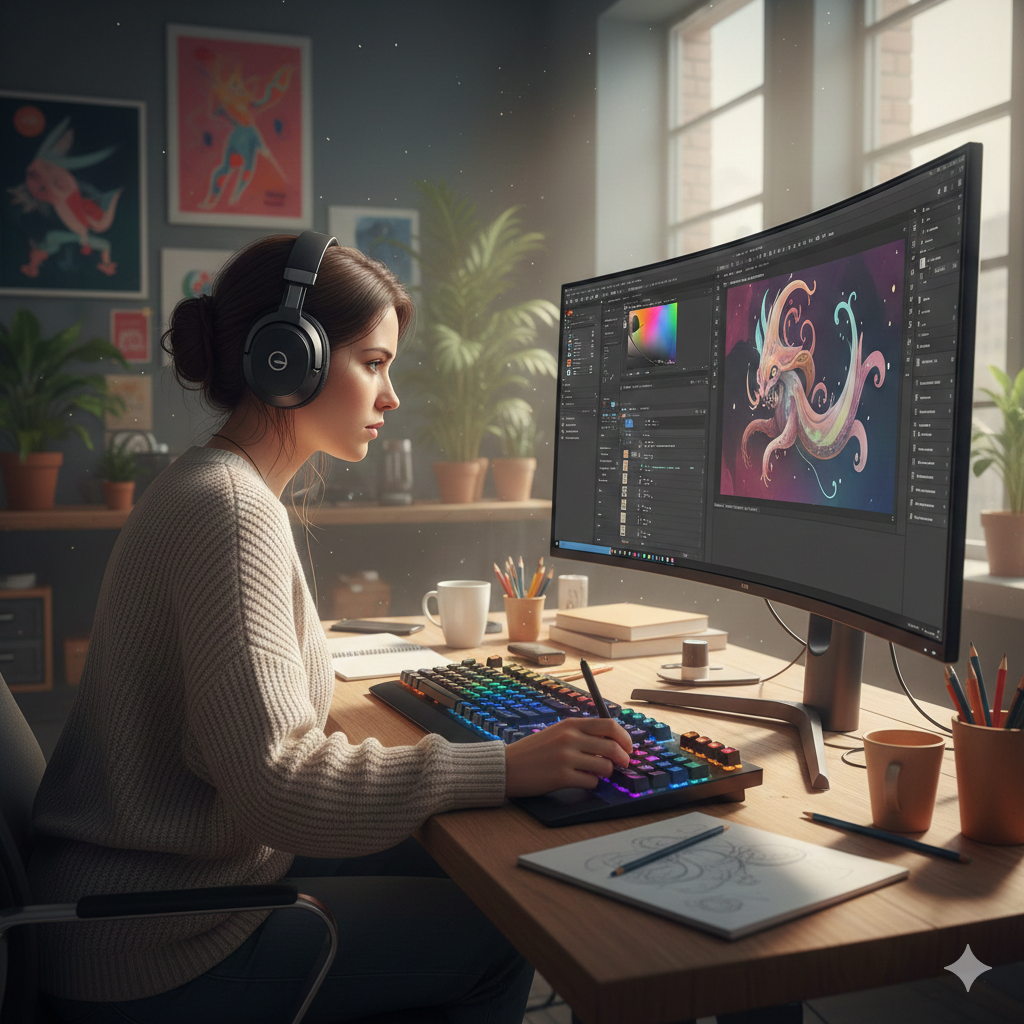How to make a professional brochure : complete guide 2025
The brochure remains one of the most effective communication media for presenting an offer, promoting a product, announcing an event or promoting your business. Despite the rise of digital technology, this tangible format maintains a particularly strong impact on prospects and customers.
Creating an attractive and powerful brochure requires a methodical approach that combines content strategy, careful design and technical expertise. In this guide, you will discover all the steps to design clear and optimized brochures, without wasting time or making costly mistakes.
The objective? Give you the keys to producing communication materials that actually convert, while exploring modern solutions that facilitate and accelerate this process.
📄 Are you looking to produce brochures based on your product data? Try SolidDesigner to generate your supports automatically.
Define the purpose of your brochure
Accurately identify your target
The first step is to determine exactly who will receive your brochure. Is it aimed at your existing customers to retain them? Is it targeting prospects to generate new leads? Or is it intended for your business partners?
This identification directly influences the tone, vocabulary, and arguments you develop. A brochure intended for professionals will use technical language and numerical data, while a medium for the general public will focus on simplicity and emotion.
Clarify your main message
Each brochure should carry a central message that is unique and easily identifiable. What exactly do you want to convey? An exceptional promotion? The launch of a new service? What are the advantages of your solution compared to the competition?
This clarification avoids dispersion and guarantees coherent communication across the entire medium. Your main message should be able to be summed up in a powerful sentence that the reader will remember.
Choosing the right format
The format of your brochure is logically based on your goals and constraints:
- 2-fold brochure : ideal for a synthetic corporate presentation
- 3-fold brochure : perfect for detailing an offer with structured arguments
- Rolled fold : recommended for storytelling or a step-by-step process
- Accordion fold : excellent for presenting a range of products or services
The choice of format also determines the organization of your content and the reading experience you offer.
Structuring your content: content before form
Prioritize information
The structure of your content follows a funnel logic: from general to specific, from problem to solution. Start by capturing attention with a compelling headline, then develop your arguments gradually.
Organize your information in descending order of importance. The essential elements (main offer, key advantages) occupy the most visible positions, while the technical details or legal mentions find their place at the end of the process.
Write effective titles and catchphrases
Your titles are the anchor points of the eye. They should be short, explicit, and beneficial to the reader. Avoid vague or overly creative formulations that interfere with immediate understanding.
The main catchphrase should answer the question “What's in it for me?” that every reader subconsciously asks himself. Highlight a concrete benefit rather than a technical characteristic.
Integrate essential information
Some elements cannot be omitted or your brochure will become ineffective:
- Full and up to date contact information
- Clear and compelling call to action
- Professional quality visuals
- Credibility proofs (testimonies, certifications)
- Important terms or conditions
🛠️ SolidDesigner allows you to dynamically organize your content from an Excel file, a PIM or a database, to create brochures without copying and pasting.
Design the design of your brochure
Respect your graphic charter
Visual consistency builds brand recognition and inspires trust. Systematically use your corporate colors, your usual fonts and your established graphic codes.
If you do not yet have a formalized graphic charter, define at least:
- Maximum two main colors
- One typeface for the titles, one for the current text
- A consistent photographic style
- Recurring graphic elements (shapes, pictograms)
Optimize readability
An illegible leaflet completely misses its purpose. Respect the fundamental rules of readability:
- Sufficient contrast between text and background
- Adapted font size (minimum 9 points for current text)
- Generous spacing between lines and paragraphs
- Consistent alignment of text elements
- Avoid information overload
Creating visual balance
The human eye naturally seeks balance and harmony. Distribute the visual masses (texts, images, white space) in a balanced way on your brochure.
White spaces are not a void to be filled, but active elements that aerate the composition and guide the eye to priority information.
Use templates and guides
DTP software allows you to create templates with folding marks. These technical guides ensure that your content is displayed correctly after folding and avoid unpleasant surprises when printed.
Position important components at a sufficient distance from the creases to prevent them from being cut or deformed during shaping.
Preparing the layout for print or digital
Mastering technical constraints
Technical finalization determines the final quality of your brochure. Strictly respect your printer's specifications:
- Lost funds : 3 to 5 mm according to recommendations
- Safety margins : minimum 3 mm for text
- Image resolution : 300 DPI for printing, 72 DPI for the web
- Color profile : CMYK for printing, RGB for digital
Check the quality before production
Perform a methodical check before final validation:
- Spelling and syntax of all texts
- Consistency of information (prices, dates, contact details)
- Quality and resolution of visuals
- Proper alignment of the elements after folding
- How links work for digital versions
Export to appropriate formats
Each use requires a specific export format:
- High definition PDF for professional printing
- Optimized PDF for sending by email or web download
- JPG or PNG for posting on social networks
- Interactive format for enhanced digital versions
🚀 SolidDesigner automatically generates the layout according to pre-established templates, ready for printing.
Automate the creation of multiple brochures
Manage serial productions
When you need to create dozens or hundreds of brochures with varying contents (product sheets, catalogs, commercial documentation), automation becomes essential.
This situation particularly concerns:
- Distributors with extended ranges
- Franchises with local adaptations
- B2B businesses with personalized offers
- Organizations with recurring communications
Connect your data sources
Automation is based on the direct connection between your existing databases and your graphic design tools. Your product information, stored in Excel, your PIM (Product Information Management) or your ERP, automatically feeds your brochure templates.
This approach eliminates manual entry, which is a source of errors and a considerable waste of time. Price updates, descriptions or visuals are instantly reflected on all of your media.
Maintain graphic consistency
Automation guarantees perfect consistency between all your brochures. Pre-established templates systematically apply your graphic charter, layout rules and quality standards.
This standardization strengthens your brand image while reducing revision and correction costs.
Frequently asked questions
How much should you budget for creating a brochure?
The cost varies according to the complexity of the project and the printing volumes. Count between €500 and €2,000 for the graphic creation of a standard brochure, plus printing costs, which depend on the print and the finish chosen.
How long does it take to create a brochure?
A simple brochure requires 2 to 5 days of work depending on the complexity. This period includes content definition, graphic creation, validation back-and-forth and technical finalization.
Can we use a brochure for digital?
Absolutely. A brochure can be available in an interactive PDF version, integrated on your website, distributed by email or shared on social networks. Plan for this multiple use from the design stage.
How do you measure the effectiveness of a brochure?
Integrate tracking elements: QR codes, dedicated URLs, specific promo codes or dedicated phone numbers. These tools allow you to precisely measure the return on investment of your brochures.
Optimize your brochure production
The creation of professional brochures follows a precise methodology that combines strategic thinking, graphic expertise and technical expertise. Each step contributes to the final effectiveness of your communication medium.
Businesses that invest in automating their creative processes gain in productivity while improving the quality and consistency of their materials. This modern approach meets the responsiveness requirements of the current market.
To maximize your results, choose solutions that directly connect your existing data to your graphic creation tools. This integration eliminates repetitive tasks and allows you to focus on strategy and creativity.
📥 Try SolidDesigner for free and create with just a few clicks from your existing data.












.webp)






